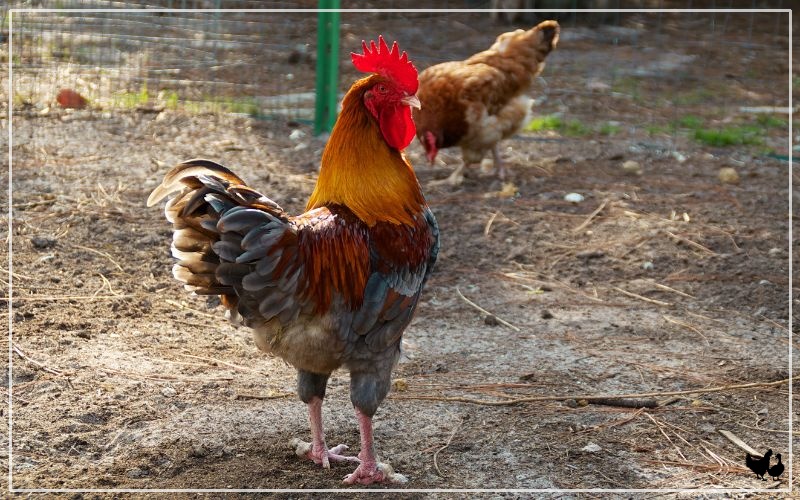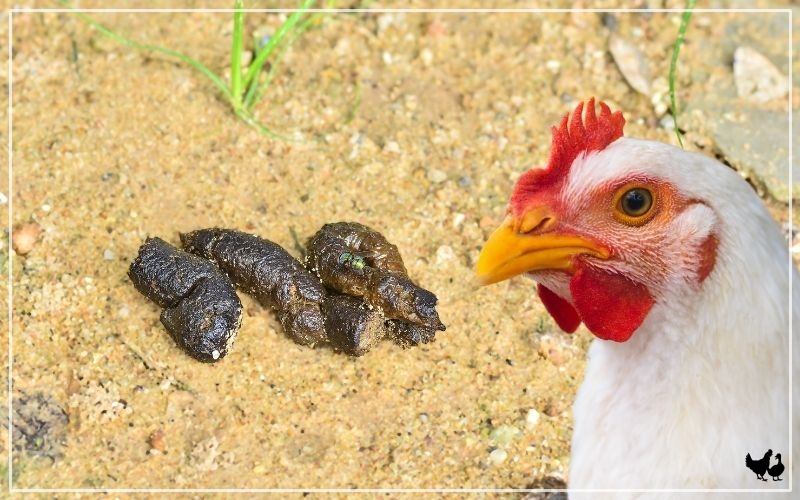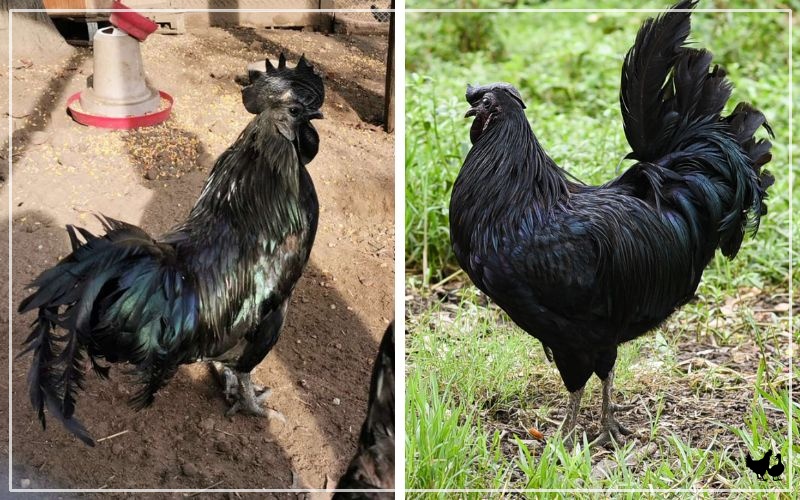How to Remove Rooster Spurs?
If you have a rooster that’s a bit defensive with humans, you may want to consider ‘disarming’ the rooster by removing the spurs on its legs.

If you’re not familiar with the process of removing rooster spurs or the maintenance that they require, the article below will prove an invaluable resource on how to remove rooster spurs, things to consider before, and the alternatives to removing them.
What are Rooster Spurs?
Located just above the back claw on a rooster’s leg, spurs are part of the leg bone and grow outwards from a spur bud.
They can be found on each leg of the rooster and they’re covered with keratin, which gives them a hard, claw-like structure, not unlike the structure of a beak. They’re also slightly arched and have an extremely sharp point.
If you’re wondering if rooster spurs can hurt, you bet they can!
Roosters use them as a defense against predators, and quite successfully. Because they’re so pointy and sharp, they’re extremely painful and can easily cause an infection if they puncture the skin.
That’s why it’s important to deal with rooster spurs if you have roosters in your flock.
While claws can cause damage too, rooster spurs are far more dangerous, hence the need to remove or trim them, especially if you’re dealing with a problematic rooster.

It’s not only humans or predators that are at risk of being injured by the spurs of a rooster – hens can also become injured during the mating process.
Although even the claws can sometimes injure a hen, rooster spurs are far more dangerous. These hard growths are not the same as the claws on the rooster.
While rooster spurs do look like very long claws, they actually grow out of the leg bone and not the feet of the rooster. Spurs also grow much longer and don’t naturally become filed down as claws do.
Therefore, regularly checking the size of the spurs on your rooster and removing them or trimming them can save you some trouble down the road.
Reasons for Removing Rooster Spurs
Although rooster spurs are the only defense roosters have against predators, trimming them or removing them is important when your rooster is directing its anger against you, other hens, or even other roosters.
– Safety Concerns
Roosters that indiscriminately attack everyone that they don’t like can cause serious harm to anyone involved.
If you have small children who might wander into the chicken yard and get attacked by the rooster, or you’re worried about your own safety, dealing with rooster spurs before something bad happens is the best course of action.
– Health Concerns
Rooster spurs can cause serious infections and life-threatening injuries. If roosters attack another rooster or a hen and cause a puncture wound, the wound can easily get infected. The same goes for any injury inflicted on you or any of your family members.
The spur can also grow with a curve backwards to the rooster, causing discomfort, therefore, it’s imperative that you routinely check the spur.
Therefore, for both the health and safety of your loved ones and the other animals in your yard, rooster spurs must be removed or otherwise trimmed to prevent injuries.
Tools and Equipment for Removing Rooster Spurs
If you worry about your rooster injuring hens during mating, picking a fight with other roosters, or fear for your family members, you should learn how you can deal with rooster spurs.
Before we get into the different methods to remove rooster spurs, here are some tools you may need:
- Pair of pliers
- Blood stop powder
- Dog nail clippers
- File for rounding the edges
First, let’s deal with how to remove rooster spurs.
Method for Removing Rooster Spurs
Removing the spurs actually means removing the hard and pointy keratin sheath, which is what basically makes the spur dangerous.
If you’ve taken it upon yourself to remove the spurs on your rooster, here are the steps you should take:
Step 1
You want to hold the rooster in a way that allows you to easily reach the spurs, but in a way that the rooster doesn’t jump around. If you can ask for someone to hold the rooster for you.
Step 2
Use your pliers to grasp the spur at the base, then gently twist the spur in a clockwise motion, then do the same in a counterclockwise motion. You’re going to hear some cracking while you’re twisting the spur.
Step 3
After twisting the spurs, the sheath should just come off, exposing the much smaller and softer quick below it.
Step 4
Repeat the same motions for the second leg as well. You’ll notice some bleeding, but it’s only a little bleeding. You will need to use a bit of blood stop powder on it.
To minimize pain and stress for the rooster, make sure to:
- Don’t squeeze the rooster too hard, but make sure you hold it still while working on the spurs to prevent injury. It’s best to have somebody hold it for you while you try to remove the spurs.
- Placing the rooster on its back while holding its legs seems to work the best to keep it calm.
- Work gently and hold the leg still while you’re trying to remove the spurs.
- Some bleeding can occur, make sure you have blood stop powder to stop the bleeding.
The quicks that were exposed after the sheath removal will harden in just 24 hours. Removing the sheath off of the spurs is not a permanent solution and you will need to remove it annually.
Alternatives to Removing Rooster Spurs
If you don’t want to remove the sheath of the spurs, there are alternatives that you can try. These too can reduce the risk of injury.

– Trimming Spurs
Trimming the spurs is also an option if the idea of removing the spurs doesn’t sit well with you.
You can use dog nail clippers to shorten the spur. You want to start by cutting off only the tip, then slowly work your way up, millimeter by millimeter.
Avoid cutting into the blood vessel and causing bleeding, so cut only a very small amount until you see a tiny dot of blood in the center of the spur.
Apply blood stop powder to stop any bleeding, and don’t cut any further. Use a file to round off the edges of the spur.
– Using Protective Gear
If you don’t want to trim or remove the spurs of your rooster, then you might want to consider using protective gear when you’re going into the chicken yard.
While protective gear (thick trousers, boots, etc.) can protect you from getting injured in case the rooster decides to attack you, it doesn’t protect hens, other roosters, or other animals in your yard from getting injured.
– Training Roosters to Reduce Aggression
If you’re a determined and patient person, you can try to reduce aggression in your rooster. It’s a task that can be a bit difficult, but it’s not impossible.
One way to reduce your rooster’s aggression is to use a spray bottle or a water hose in a gentle setting to spray the rooster down when it’s launching into an attack.
Another way to tame an aggressive rooster is to never run away from it, but instead take a few steps towards it and make yourself appear larger.
You may even raise your arms or move them around to make yourself seem even larger and more imposing.
If the rooster submits to you, it will start pecking the ground and ignoring you. But it’s not over yet! You may have won this round, but not the game. You will need to repeat this behavior until the rooster learns it’s futile to pick a fight with you.
Never turn your back on a rooster and never run from it, because that will make it think that you’re submitting to it.
Ethical Considerations
If you find it difficult to defend the idea of removing the spurs of an aggressive rooster, rest assured that the rooster is in no pain during the procedure.
While you can find ways to protect yourself from the attacks of an aggressive rooster, the same cannot be said about your hens or other roosters in the flock. Therefore, you must take some measures to protect them as well.
It is also possible to permanently remove rooster spurs, however, since it involves the removal of the spur bud itself, it involves surgery and should only be performed by a professional.
However, by permanently removing the spurs, you’re basically disarming your rooster, leaving it defenseless, which can be dangerous if predators were to attack the flock.
You can find a vet that can help you make the best decision for your rooster, depending on its level of aggressiveness.
A poultry professional can help in removing the sheath, trimming the spurs, or permanently removing the spurs.
Conclusion
Rooster spurs can be dangerous on an aggressive rooster – due to their size and sharpness they can cause severe puncture wounds that can be life-threatening.
Removing or trimming the spurs can help prevent injuries and keep you, members of your family, and the hens of your flock safe.



